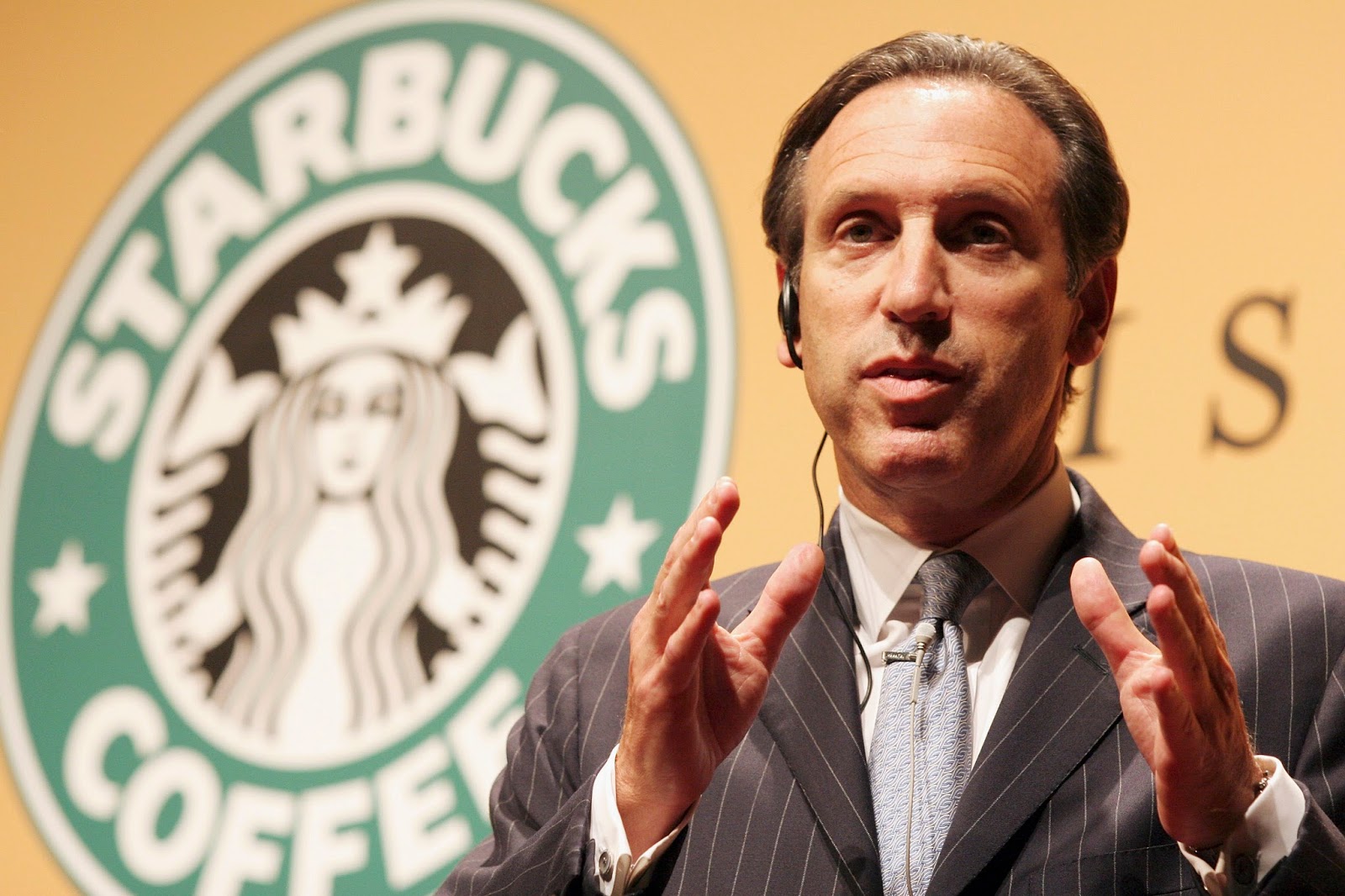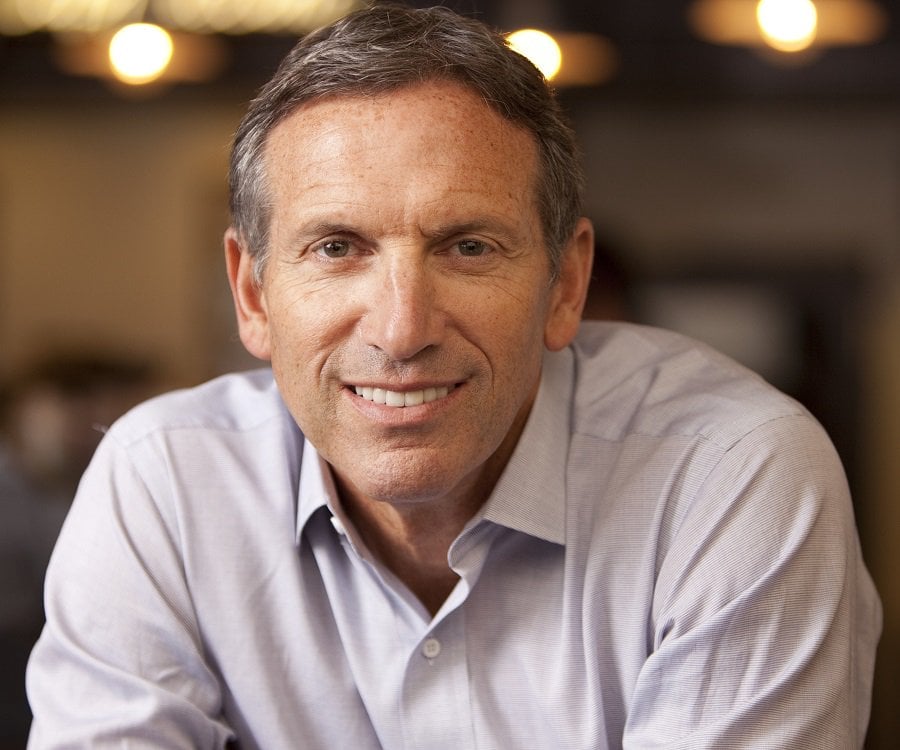Howard Schultz’s Rise to Success

Howard Schultz, the iconic figure behind Starbucks, didn’t start his journey with a cup of coffee in hand. He rose from humble beginnings to become a global coffee mogul, transforming a small Seattle-based coffee shop into a worldwide phenomenon. His story is a testament to ambition, leadership, and a deep-seated passion for coffee.
Early Life and Career
Schultz’s early life was marked by hard work and determination. Born and raised in Brooklyn, New York, to working-class parents, he developed a strong work ethic at a young age. After graduating from Northern Michigan University, he joined Xerox as a salesman, quickly rising through the ranks. His entrepreneurial spirit led him to Hammarplast, a Swedish manufacturer of housewares, where he honed his business acumen.
Acquiring Starbucks and Vision
In 1982, Schultz stumbled upon a small coffee shop called Starbucks in Seattle. Intrigued by the unique atmosphere and the aroma of freshly brewed coffee, he was captivated by the concept. He joined the company as director of marketing and operations, quickly recognizing the potential for a larger market. In 1987, he led a group of investors to acquire Starbucks, setting the stage for his ambitious vision to transform coffee into a cultural experience. Schultz believed that Starbucks could become more than just a coffee shop; it could be a “third place” between home and work, a place for connection and community.
Leadership Principles and Strategies
Schultz’s leadership was instrumental in Starbucks’ initial success. He instilled a strong company culture focused on customer service, quality, and innovation. His key leadership principles included:
- Customer Obsession: Schultz believed in creating an exceptional customer experience, treating every customer like a valued guest. This principle permeated every aspect of the business, from the design of the stores to the training of baristas.
- Empowering Employees: Schultz recognized the importance of investing in his employees, empowering them to make decisions and contribute to the company’s success. He believed that happy employees would lead to happy customers.
- Passion for Coffee: Schultz’s deep passion for coffee was contagious. He traveled the world, seeking out the finest beans and developing innovative brewing methods. His commitment to quality was reflected in every cup of Starbucks coffee.
- Creating a Culture: Schultz fostered a culture of inclusivity and respect, where everyone felt valued and appreciated. This culture was essential to attracting and retaining top talent.
Timeline of Schultz’s Achievements
Schultz’s journey with Starbucks was marked by significant achievements and turning points:
| Year | Achievement |
|---|---|
| 1982 | Joined Starbucks as director of marketing and operations. |
| 1987 | Led a group of investors to acquire Starbucks. |
| 1992 | Starbucks went public, raising $17 million. |
| 1996 | Starbucks launched its first drive-thru store. |
| 2000 | Starbucks surpassed McDonald’s as the largest coffeehouse chain in the world. |
| 2008 | Schultz stepped down as CEO but remained chairman of the board. |
| 2017 | Schultz returned as CEO to revitalize the company. |
Starbucks’ Transformation and Innovation

Howard Schultz didn’t just build Starbucks, he *transformed* it from a local coffee shop into a global phenomenon. He didn’t just sell coffee, he sold an *experience*. And he didn’t just focus on profit, he emphasized *ethics*. It’s a story of ambition, innovation, and a whole lot of coffee!
The Starbucks Experience
Schultz understood that coffee wasn’t just a drink, it was a *ritual*. He wanted to create a place where people could *connect*, *relax*, and *enjoy* their coffee. He envisioned a *third place*, a space between home and work, where people could feel welcome and comfortable. He made sure every detail, from the store design to the baristas’ friendly service, contributed to this experience.
Ethical Sourcing Practices
Schultz also believed in *doing good* while doing well. He introduced ethical sourcing practices, ensuring that Starbucks’ coffee beans were grown sustainably and that farmers were paid fairly. This commitment to social responsibility resonated with customers and solidified Starbucks’ image as a company with a conscience.
Impact on Brand Identity and Customer Loyalty
Schultz’s leadership transformed Starbucks into a *global brand*. His focus on customer experience and ethical practices built a strong brand identity that resonated with customers. Starbucks became known for its *quality*, *consistency*, and *commitment* to social responsibility. This, in turn, fostered incredible customer loyalty, making Starbucks a household name and a cultural icon.
Major Milestones under Schultz’s Leadership
Here’s a glimpse into Starbucks’ journey under Schultz’s leadership:
| Year | Milestone | Details |
|---|---|---|
| 1987 | Schultz buys Starbucks | He takes over a small chain of 11 stores, aiming to create a different coffee experience. |
| 1992 | Starbucks goes public | This marks a significant step in the company’s growth and expansion. |
| 1996 | First Starbucks store opens outside North America | Starbucks expands its global reach, bringing its coffee culture to new markets. |
| 2008 | Starbucks introduces “Fair Trade” coffee | This reinforces the company’s commitment to ethical sourcing and sustainable practices. |
| 2012 | Starbucks launches “My Starbucks Rewards” program | This loyalty program rewards customers for their patronage and builds deeper engagement. |
Howard Schultz’s Impact on the Coffee Industry

Howard Schultz’s journey from a humble coffee bean salesman to a coffee empire builder has left an indelible mark on the coffee industry. He revolutionized the way people perceive and consume coffee, transforming it from a simple beverage to a cultural experience.
Schultz’s Approach to Coffee
Schultz’s vision for coffee differed significantly from the prevailing industry norms. He envisioned coffee as a social experience, a place for connection and community, rather than just a quick caffeine fix. This philosophy is reflected in the cozy, inviting ambiance of Starbucks stores, the focus on high-quality beans and brewing methods, and the emphasis on customer service. In contrast, many other coffee companies at the time prioritized speed and efficiency, often sacrificing quality and customer experience for lower prices.
Starbucks’ Impact on the Coffee Industry Landscape and Consumer Preferences, Howard schultz
Starbucks’ success has had a profound impact on the coffee industry landscape and consumer preferences. The company’s dominance has led to a surge in demand for specialty coffee, with consumers becoming more discerning about the quality and origin of their beans. The rise of Starbucks also spurred a wave of independent coffee shops, competing to offer unique experiences and innovative brews.
Ethical and Social Responsibilities in the Coffee Industry
Schultz recognized the ethical and social responsibilities inherent in the coffee industry, particularly concerning the well-being of coffee farmers. Starbucks was one of the first major coffee companies to implement ethical sourcing practices, ensuring fair prices and sustainable farming methods. The company’s “Coffee and Farmer Equity (CAFE) Practices” program has become a model for ethical sourcing in the industry.
Visual Representation of the Global Coffee Industry
Imagine a global map with coffee-producing regions highlighted in vibrant hues. Starbucks’ influence is evident through its network of stores and partnerships, spanning continents and cultures. The map also showcases the interconnectedness of the coffee industry, from the farmers in remote villages to the baristas in bustling cities. Starbucks’ position as a global leader is evident, with its iconic logo serving as a symbol of quality and experience in the coffee world.
Howard Schultz, the man who turned Starbucks into a global phenomenon, stepped down as CEO in 2017, leaving behind a legacy of coffee-fueled ambition. But the story doesn’t end there. Enter Laxman Narasimhan , a seasoned executive who’s now tasked with navigating Starbucks through a new era of growth and challenges.
It’ll be interesting to see how Narasimhan builds on Schultz’s vision, and whether he can keep the coffee giant brewing strong for years to come.
Howard Schultz, the visionary behind Starbucks, understood the power of building a brand around a shared experience. His approach echoes the philosophy of strength training pioneer Brian Nichol , who emphasizes the importance of building a strong foundation through consistent effort.
Schultz, like Nichol, believed in cultivating a loyal community that valued the journey, not just the destination.
